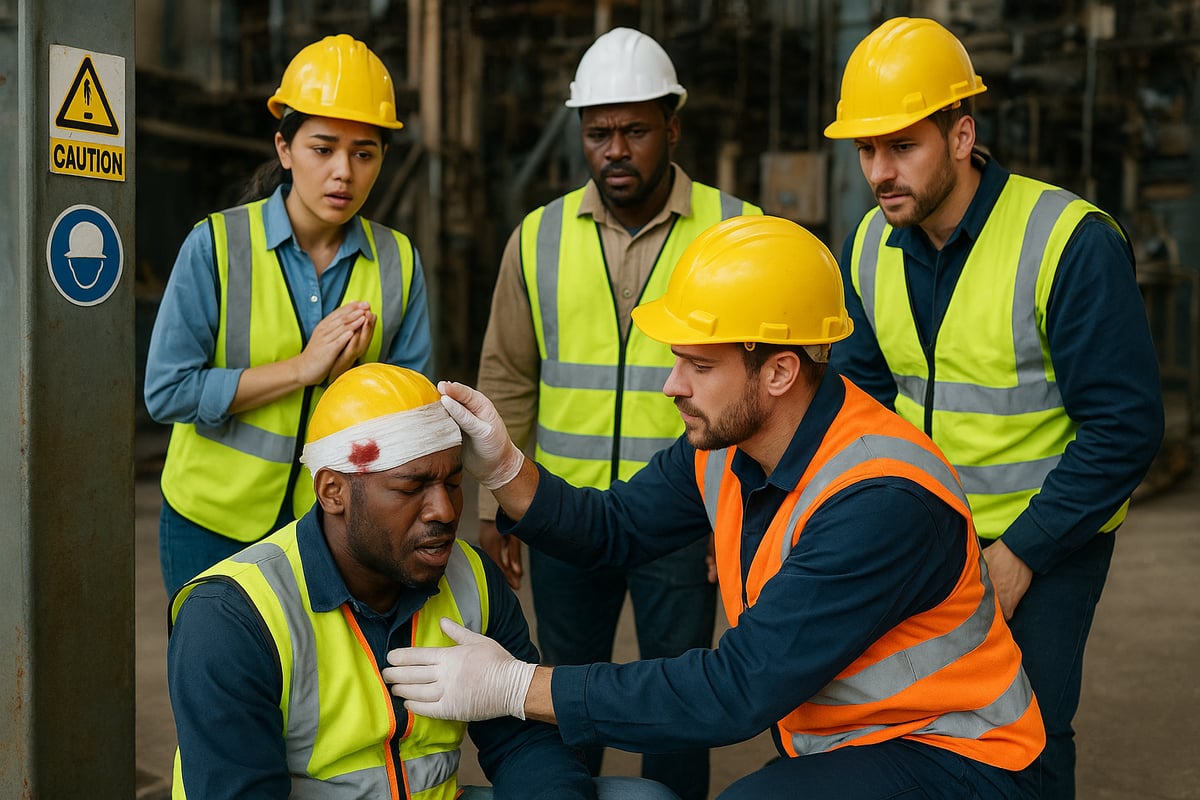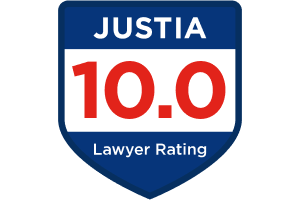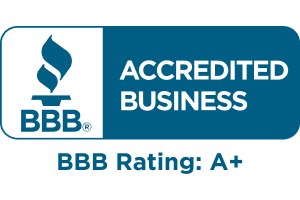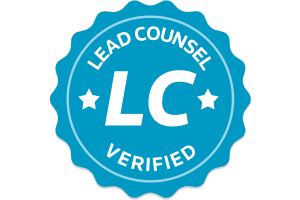- Free Consultation: 866-966-5240 Tap Here To Call Us
Workplace Accident Lawyers Guide: Your 2025 Legal Resource
Every year, thousands of employees experience workplace accidents that can alter lives in a matter of seconds. The ripple effects touch not only the injured worker but also their families, bringing emotional, physical, and financial challenges.
Victims often face confusing legal processes, uncooperative employers, and insurance companies looking to minimize payouts. Understanding your rights and knowing when to consult experienced workplace accident lawyers can make all the difference in your recovery and peace of mind.
This comprehensive 2025 guide will equip you with essential information on your legal rights, how to choose the right lawyer, what steps to take after an injury, available compensation, and the latest legal updates. Use this guide as your trusted resource to make informed decisions and maximize your protection after a workplace accident.
Understanding Workplace Accidents: Types, Causes, and Statistics
Every year, workplace accidents affect countless employees and their families. Legally, a workplace accident is any unintended incident that occurs during employment and results in injury or illness. Under U.S. law, this includes sudden events and conditions developed over time. The impact reaches beyond physical harm, often resulting in emotional distress, lost wages, and long-term financial burdens. Employers may also face productivity losses and increased insurance costs. For those seeking guidance, workplace accident lawyers are essential in clarifying legal responsibilities and rights.
Defining Workplace Accidents and Their Impact
A workplace accident can involve slips, trips, falls, or exposure to dangerous substances. Legally, it must occur while performing job duties, either on-site or off-site. The consequences extend to both workers and employers. Victims often experience chronic pain or disability, leading to major lifestyle changes. Employers face regulatory penalties and reputational harm. For example, a back injury from lifting heavy objects may cause lifelong discomfort and significant income loss. In such cases, workplace accident lawyers play a key role in securing medical care and compensation.
Common Types of Workplace Injuries
Workplace injuries vary widely in severity and type. Common examples include:
- Abrasions and lacerations
- Amputations and crush injuries
- Burns and chemical exposures
- Fractures and broken bones
- Traumatic brain injuries (TBIs)
- Spinal cord injuries and paralysis
- Fatalities
Occupational illnesses like asbestosis, silicosis, lung cancer, and mesothelioma are also significant. Repetitive stress and cumulative trauma injuries are increasingly reported. For instance, a construction worker suffering a fall may face spinal cord trauma. In these cases, workplace accident lawyers can advocate for full compensation and proper treatment.
Major Causes of Workplace Accidents
The leading causes of workplace accidents often stem from preventable hazards. Key contributors include:
- Employer negligence (insufficient training, unsafe practices)
- Faulty machinery and equipment malfunctions
- Exposure to hazardous chemicals or environments
- Transportation-related incidents
- Falls from heights or uneven surfaces
A warehouse worker injured by a falling object due to improper stacking illustrates the risks. Addressing these hazards is crucial for prevention. When accidents occur, workplace accident lawyers investigate root causes and identify responsible parties to build strong claims.
Key Workplace Accident Statistics (2023-2024)
Recent data reveals the ongoing scope of workplace injuries. Annually, there are 2.9 million non-fatal workplace injuries and illnesses in the U.S. Over 4,800 fatalities occur each year, with more than 13 deaths per day. The highest fatality rates are seen in agriculture, transportation, mining, and construction. The most common causes include transportation incidents (42.4 percent), falls (16.5 percent), and contact with objects (14.9 percent). For an in-depth look, review the 2023 Workplace Injury Statistics. States most affected are Texas, California, Florida, New York, and Ohio. Workplace accident lawyers rely on these statistics for case analysis and strategy.
The Ongoing Challenge of Workplace Safety
Maintaining a safe workplace is a shared responsibility. OSHA enforces safety standards and investigates violations, aiming to reduce accident rates. Despite improvements, new risks emerge as industries evolve. Proactive safety programs and regular training are vital for prevention. Trends show that serious injuries still occur, especially where safety culture falls short. For both employees and employers, engaging workplace accident lawyers early ensures compliance and protects everyone’s rights.
Your Legal Rights After a Workplace Accident
Every worker deserves to know their legal rights after a workplace accident. Understanding what protections, claims, and actions are available can make a significant difference in your recovery and future. Workplace accident lawyers serve as critical guides, helping you navigate these legal complexities with confidence.
Workers’ Compensation vs. Personal Injury Claims
After an on-the-job injury, you may be eligible for workers’ compensation or a personal injury claim. Workers’ compensation is a no-fault system that provides medical care and wage loss benefits, but limits your ability to sue your employer. Personal injury claims, on the other hand, may be available if a third party is responsible or if gross negligence occurred.
| Claim Type | Who Can You Sue? | Compensation Limits | Pain & Suffering? |
|---|---|---|---|
| Workers’ Compensation | Employer | Medical, wage loss capped | No |
| Personal Injury Lawsuit | Third Parties | No statutory cap | Yes |
Workplace accident lawyers can help you determine which path applies to your situation. For more on your rights, see this Personal injury rights in 2025 guide.
Legal Obligations of Employers
Employers have a legal duty to maintain a safe workplace in compliance with OSHA standards. They must provide safety training, equipment, and protocols. If an injury occurs, employers are required to promptly report the incident, document the event, and cooperate with insurance carriers.
Common employer obligations include:
- Ensuring all equipment is safe and maintained
- Providing adequate training for all tasks
- Reporting injuries within state-mandated timeframes
Workplace accident lawyers will assess whether your employer met these obligations or if negligence contributed to your injury.
Employee Rights and Protections
As an employee, you have the right to file a claim after a workplace injury without fear of retaliation. You are entitled to medical treatment, wage replacement, and, if needed, legal representation throughout the process.
Key employee rights:
- Access to immediate and ongoing medical care
- Wage replacement if unable to work
- Legal protection from retaliation or wrongful termination
Workplace accident lawyers can step in if your employer or insurer violates these rights or delays your benefits.
Time Limits and Statutes of Limitations
Time is of the essence after a workplace accident. Each state sets strict deadlines for filing claims. For example, in California, you must report your injury within 30 days and file a workers’ compensation claim within one year. Missing these deadlines can result in losing your benefits entirely.
Statute of limitations highlights:
- Workers’ compensation: often 1–2 years from injury date
- Personal injury: varies by state, typically 2–3 years
Workplace accident lawyers ensure your case is filed on time and all paperwork is complete.
Special Considerations for Catastrophic Injuries and Wrongful Death
Catastrophic injuries, such as paralysis or amputation, often trigger enhanced legal protections and higher compensation. In wrongful death cases, surviving family members may be eligible to file claims for lost income, funeral costs, and emotional loss.
Special considerations include:
- Expanded damages for severe injuries
- Rights of spouses, children, or dependents to file wrongful death actions
Workplace accident lawyers will guide families through these sensitive and complex claims.
Navigating Complex Cases: Multiple Employers, Contractors, and Uninsured Workplaces
Some accidents involve multiple parties, such as general contractors, subcontractors, or uninsured employers. These cases require careful analysis to identify all liable parties and ensure maximum compensation.
Examples of complex scenarios:
- Construction site accidents with several contractors
- Injuries in workplaces without workers’ compensation coverage
Workplace accident lawyers are skilled at untangling these situations and pursuing every available avenue for recovery.
Step-by-Step Guide: What to Do After a Workplace Accident
Navigating the aftermath of a workplace accident can feel overwhelming. Understanding the right steps to take is crucial for protecting your health, legal standing, and financial future. This guide breaks down every stage, offering practical advice and highlighting where workplace accident lawyers can make a difference.
Step 1: Seek Immediate Medical Attention
Your health is the top priority after any workplace injury. Seek medical care as soon as possible, even if your injuries seem minor. Immediate treatment not only protects your well-being but also creates an essential medical record for any future claims.
Notify the healthcare provider that your injury occurred at work. This ensures your treatment is properly documented and linked to your employment. In emergencies, call 911 or visit the nearest hospital. Remember, workplace accident lawyers recommend never delaying care, as prompt action strengthens your legal position.
If you experience symptoms like dizziness or severe pain, do not wait. Quick response can help prevent long-term complications and supports your case if legal action becomes necessary.
Step 2: Report the Accident to Your Employer
After receiving care, report the incident to your employer right away. Most companies require written notice within a specific timeframe, which can range from 24 hours to several days, depending on state law.
Follow company procedures for reporting, and keep copies of all communications. If your employer refuses to document the accident, create your own written record and send it via email or certified mail. Workplace accident lawyers emphasize that prompt reporting safeguards your rights and prevents disputes about when the injury occurred.
Keep a log of everyone you speak with about the accident. This documentation can be valuable evidence if you need to challenge your employer’s response later.
Step 3: Document Everything
Thorough documentation is essential for any workplace injury claim. Collect evidence at the scene, including photographs of hazards, injuries, and equipment involved. Gather witness statements and obtain a copy of the official accident report.
Track all medical treatments, prescriptions, and expenses. Use a journal to record your symptoms, pain levels, and recovery progress. Workplace accident lawyers often rely on this information to build strong cases and negotiate with insurers on your behalf.
Organize receipts, pay stubs, and correspondence related to your injury. These records can help prove lost wages and out-of-pocket costs.
Step 4: File a Workers’ Compensation Claim
Initiate your claim as soon as possible. Each state has its own forms and deadlines, so check your local requirements. Provide all necessary information, including medical reports and details about how the accident occurred.
You may need to file with your employer’s insurance or a state workers’ compensation board. If your claim is denied or delayed, review your rights and consider consulting workplace accident lawyers for guidance. For California-specific guidance, the California workplace accident law resource offers up-to-date legal information and practical steps for injured employees.
Respond promptly to requests for additional documentation. Delays can jeopardize your benefits and prolong your recovery.
Step 5: Consult a Workplace Accident Lawyer
If you suffer serious injuries, face a denied claim, or suspect third-party liability, seek legal advice. Experienced workplace accident lawyers can evaluate your case, gather critical evidence, and negotiate with insurers or employers.
During your consultation, discuss fee structures, the lawyer’s experience, and their approach to communication. Legal experts can help secure expert witnesses, such as accident reconstructionists or medical professionals, to strengthen your case.
A skilled attorney can also advise you on potential personal injury claims in addition to workers’ compensation. This step is crucial for maximizing your compensation and ensuring your rights are protected throughout the process.
Step 6: Protect Your Rights During Recovery
While you recover, remain vigilant about your rights. Avoid making statements to insurers without legal guidance, and do not sign documents you do not understand. If your employer offers light duty or accommodations, discuss your options with your doctor.
Workplace accident lawyers can help you address issues like retaliation or wrongful termination. Communicate regularly with your medical providers and keep your records up to date.
Returning to work should only occur when your physician clears you. Do not rush this process, as premature return can risk your health and legal claim.
Step 7: Appeal and Litigation Options
If your claim is denied or you disagree with the compensation offered, you have the right to appeal. This may involve administrative hearings, mediation, or even a lawsuit. Workplace accident lawyers are essential partners during appeals, guiding you through deadlines and presenting evidence.
Understand the timeline for appeals in your state, as missing a deadline can forfeit your rights. A successful appeal can result in increased compensation or access to additional benefits.
By following these steps and working closely with workplace accident lawyers, you give yourself the best chance at a fair recovery and a secure future.
How to Choose the Right Workplace Accident Lawyer
Selecting the right workplace accident lawyers is a crucial step in protecting your rights and securing fair compensation. With so many options available, understanding what sets top attorneys apart can help you make an informed choice and avoid common pitfalls.
Key Qualities to Look For
When evaluating workplace accident lawyers, prioritize attorneys with a proven track record in workplace injury and workers’ compensation cases. Look for substantial experience dealing with cases similar to yours, especially those involving serious injuries or catastrophic events.
Experience with complex cases, such as construction site injuries, signals a deep understanding of industry-specific hazards and legal strategies. For instance, attorneys who have handled Construction accident injury claims often possess valuable insights into navigating challenging scenarios.
Verify that your lawyer is well-versed in both state and federal workplace safety laws, including OSHA regulations. A strong history of verdicts and settlements demonstrates effectiveness in achieving favorable outcomes.
Questions to Ask During Consultations
During initial meetings with workplace accident lawyers, ask about their fee structures. Most reputable attorneys work on a contingency basis, meaning you pay no fees unless you recover compensation, but always confirm this in writing.
Discuss how your case will be managed and who will handle day-to-day communication. Some firms assign cases to junior associates, so clarify whether your lead attorney will remain involved throughout.
Key questions include:
- How frequently will you receive updates?
- What is their experience with cases involving your specific injury type?
- Are they willing to take your case to trial if necessary?
Open and clear communication is essential when working with workplace accident lawyers, as it builds trust and ensures your concerns are addressed promptly.
The Role of Expert Witnesses and Investigators
Top workplace accident lawyers often rely on a network of expert witnesses and investigators to build strong cases. These professionals include accident reconstructionists, OSHA consultants, and medical experts who can provide objective analysis of your injuries and the incident.
Expert testimony can be the deciding factor in establishing liability, especially in cases involving faulty equipment or disputed workplace conditions. For example, an engineering expert might demonstrate how a machinery malfunction directly caused your injury.
Investigators help gather critical evidence, such as photographs, witness statements, and safety records. By leveraging these resources, workplace accident lawyers can present compelling arguments to insurers, judges, and juries.
Evaluating Client Reviews and Firm Reputation
Take time to research workplace accident lawyers by reading independent client reviews and testimonials. Look for consistently positive feedback regarding communication, responsiveness, and case results.
Check for any disciplinary actions or complaints with state bar associations. Reputable firms are transparent about their record and happy to provide references upon request.
Be cautious of high-volume “billboard” firms that may not offer personalized attention. Instead, seek out lawyers known for handling catastrophic injury cases with care and dedication. A strong reputation in the legal community is often a sign of trustworthy and effective workplace accident lawyers.
Maximizing Compensation: What You Can Recover and How
Maximizing your recovery after a workplace injury is essential for your future well-being. Understanding what you can claim, how values are determined, and the role workplace accident lawyers play will help you make informed decisions and secure the best possible outcome.
Types of Compensation Available
After a workplace accident, several categories of compensation may be available. Medical expenses often represent the largest portion and include hospital bills, surgeries, rehabilitation, and even future medical care. Lost wages cover the income you miss during recovery, while loss of earning capacity accounts for permanent limitations affecting your work life.
You may also be entitled to damages for pain and suffering, mental anguish, and loss of enjoyment of life, especially in catastrophic injury cases. Vocational rehabilitation and retraining costs are recoverable if you cannot return to your previous job. For severe injuries like spinal cord damage, settlements can be substantial. For further details on these cases, see Spine injury legal insights. Consult workplace accident lawyers to fully understand all potential compensation types.
Factors Affecting Compensation Amounts
Several factors influence how much compensation you may receive. The severity and permanence of your injury play a major role, as do the specific circumstances of the accident. If employer negligence or third-party fault is proven, your case may result in higher compensation.
Other considerations include the impact on your daily life, long-term prognosis, and any pre-existing conditions. Insurance policy limits and state laws also shape settlement values. Experienced workplace accident lawyers can help assess how these details apply to your situation and advocate for a fair amount.
How Settlements Are Calculated
Calculating settlements involves both economic and non-economic damages. Economic losses, such as medical bills and lost wages, are straightforward and supported by documentation. Non-economic damages, including pain and suffering, are more subjective and often require expert testimony.
Workplace accident lawyers frequently use specialists to establish the value of claims, especially when future costs or permanent disabilities are involved. Insurance policy limits can cap the amount recoverable, making negotiation skills crucial. Here’s a quick comparison:
| Damage Type | Example | Calculation Method |
|---|---|---|
| Economic | Lost wages | Pay stubs, tax returns |
| Non-Economic | Pain and suffering | Expert testimony, precedents |
The Role of Legal Representation in Maximizing Recovery
Having skilled workplace accident lawyers on your side can make a significant difference in your outcome. Attorneys negotiate with insurers and employers, ensuring every loss is documented and valued properly. They are prepared to take your case to trial if negotiations stall, which can prompt higher offers.
Workplace accident lawyers also coordinate with medical and financial experts, gather evidence, and handle appeals if your claim is denied. Their experience in similar cases helps anticipate challenges and overcome tactics used by opposing parties.
Tax Implications and Structured Settlements
Understanding the tax consequences of your settlement is vital. Generally, workers’ compensation benefits are not taxable, but certain personal injury awards may be. Structured settlements allow you to receive payments over time, which can help with long-term financial planning.
Workplace accident lawyers will explain the pros and cons of lump sum versus structured settlements. They also clarify which portions of your recovery may be subject to taxes, helping you avoid surprises when it’s time to collect your compensation.
Real-World Case Results and Precedents
Notable verdicts and settlements highlight what is possible with effective legal representation. For example, amputation and paralysis cases often result in multi-million dollar awards due to the lifelong impact on victims. Recent trends show increasing compensation for catastrophic injuries and greater use of expert witnesses to support claims.
Workplace accident lawyers draw from precedent to build compelling cases, using past results as benchmarks during negotiations. Staying informed about successful outcomes can help set realistic expectations and empower you throughout the process.
2025 Legal Updates: New Laws, Trends, and What to Watch For
Workplace accident lawyers and their clients must stay informed as the legal landscape shifts in 2025. This year brings significant changes in regulations, technology, and litigation trends affecting workplace injury claims. Understanding these updates is crucial for protecting your rights and maximizing compensation.
Recent Changes in Workplace Accident Law
In 2025, several legal reforms are transforming workplace safety and employer accountability. The Occupational Safety and Health Administration (OSHA) has introduced updated penalty guidelines and new debt collection procedures. These measures aim to support small businesses while enforcing stricter safety standards. For detailed information, see OSHA’s 2025 Penalty Guidelines.
Many states are also revising workers’ compensation rules, increasing benefits, and clarifying employer obligations. New standards address the growing trend of remote work, ensuring that home offices meet basic safety requirements. Workplace accident lawyers are closely monitoring these changes to advise clients effectively.
Technology and Workplace Injury Claims
Advances in technology are reshaping how workplace injuries are reported and investigated. Wearable devices now monitor worker movements and detect hazardous conditions in real time. Cameras and digital platforms streamline incident documentation, making it easier to gather evidence. Telemedicine is increasingly used for medical evaluations, speeding up the claims process.
Workplace accident lawyers use these tools to build stronger cases and ensure their clients receive accurate medical assessments. Technology also helps identify patterns in workplace hazards, leading to better prevention strategies.
Trends in Litigation and Settlement
Litigation in workplace injury cases is evolving rapidly. There is a greater reliance on expert witnesses, such as OSHA consultants and accident reconstruction specialists, to clarify the cause and extent of injuries. Courts are holding employers to higher standards, especially regarding recordkeeping and safety policies.
Recent cases have set new precedents, impacting how settlements are calculated. Workplace accident lawyers are adapting their strategies to meet these higher expectations and secure more favorable outcomes for injured workers.
What to Expect in the Coming Year
Looking ahead, legal reforms are likely to focus on protecting gig economy and temporary workers. Automation and artificial intelligence present new risks, prompting lawmakers to address emerging safety challenges. Workers and employers alike should stay alert to changes that could affect their rights and responsibilities.
Workplace accident lawyers will play a key role in interpreting these developments. By tracking new legislation and court decisions, they help clients navigate an increasingly complex legal environment.
Resources for Staying Updated
To keep up with the latest legal updates, rely on reputable sources. Visit OSHA Laws and Regulations for comprehensive information on workplace safety standards. Professional organizations and support groups offer guidance for injured workers. Regular consultation with workplace accident lawyers ensures you are prepared for any legal changes in 2025.
Staying informed empowers you to protect your rights and achieve the best possible outcome after a workplace accident.
If you or a loved one is facing the aftermath of a workplace accident, you deserve support and clear guidance as you navigate the complex legal landscape ahead. Throughout this guide, we’ve discussed your rights, explained crucial steps following an injury, and highlighted the importance of having an experienced advocate on your side. Remember, you don’t have to take on employers or insurance companies alone. If you have questions about your next move or want to understand your options, you can reach out for a Free Consultation No Fee Until We Win.












